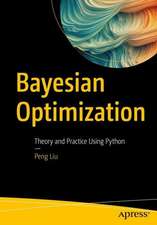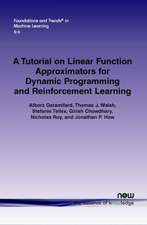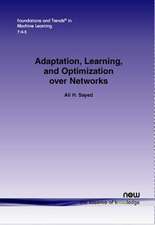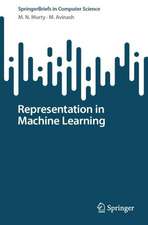Statistical Methods for Recommender Systems
Autor Deepak K. Agarwal, Bee-Chung Chenen Limba Engleză Hardback – 23 feb 2016
Preț: 362.28 lei
Preț vechi: 452.85 lei
-20% Nou
69.33€ • 72.12$ • 57.24£
Carte tipărită la comandă
Livrare economică 14-28 aprilie
Specificații
ISBN-10: 1107036070
Pagini: 298
Ilustrații: 66 b/w illus. 18 tables
Dimensiuni: 157 x 235 x 20 mm
Greutate: 0.54 kg
Editura: Cambridge University Press
Colecția Cambridge University Press
Locul publicării:New York, United States
Cuprins
Part I. Introduction: 1. Introduction; 2. Classical methods; 3. Explore/exploit for recommender problems; 4. Evaluation methods; Part II. Common Problem Settings: 5. Problem settings and system architecture; 6. Most-popular recommendation; 7. Personalization through feature-based regression; 8. Personalization through factor models; Part III. Advanced Topics: 9. Factorization through latent dirichlet allocation; 10. Context-dependent recommendation; 11. Multi-objective optimization.
Recenzii
Descriere
Designing algorithms to recommend items such as news articles and movies to users is a challenging task in numerous web applications. The crux of the problem is to rank items based on users' responses to different items to optimize for multiple objectives. Major technical challenges are high dimensional prediction with sparse data and constructing high dimensional sequential designs to collect data for user modeling and system design. This comprehensive treatment of the statistical issues that arise in recommender systems includes detailed, in-depth discussions of current state-of-the-art methods such as adaptive sequential designs (multi-armed bandit methods), bilinear random-effects models (matrix factorization) and scalable model fitting using modern computing paradigms like MapReduce. The authors draw upon their vast experience working with such large-scale systems at Yahoo! and LinkedIn, and bridge the gap between theory and practice by illustrating complex concepts with examples from applications they are directly involved with.

























